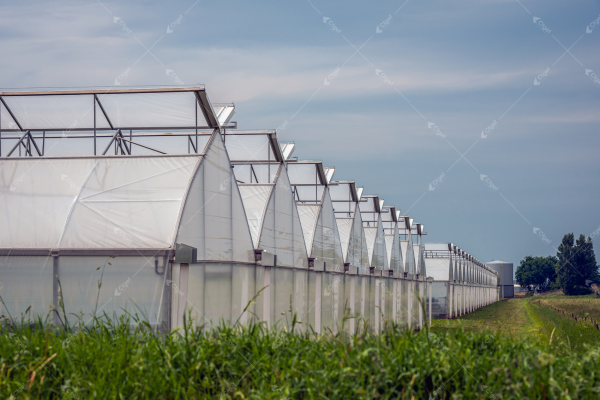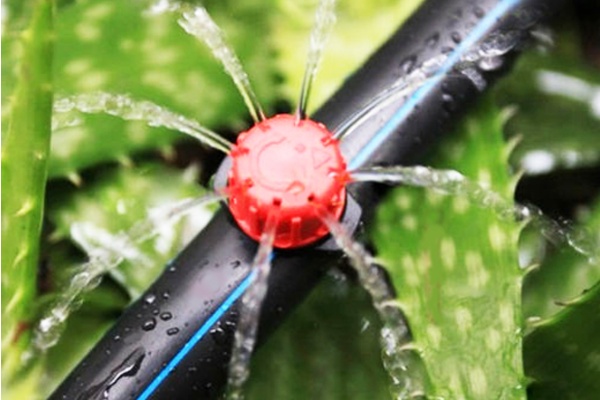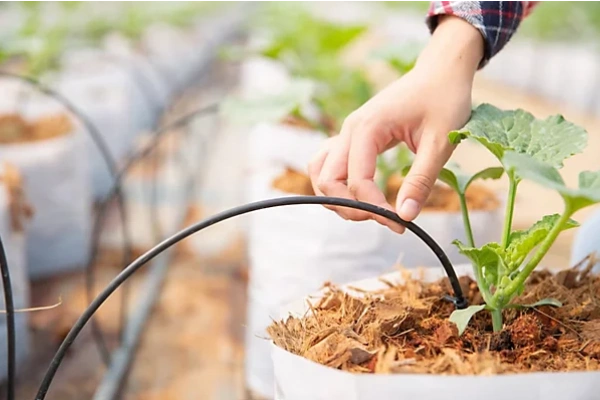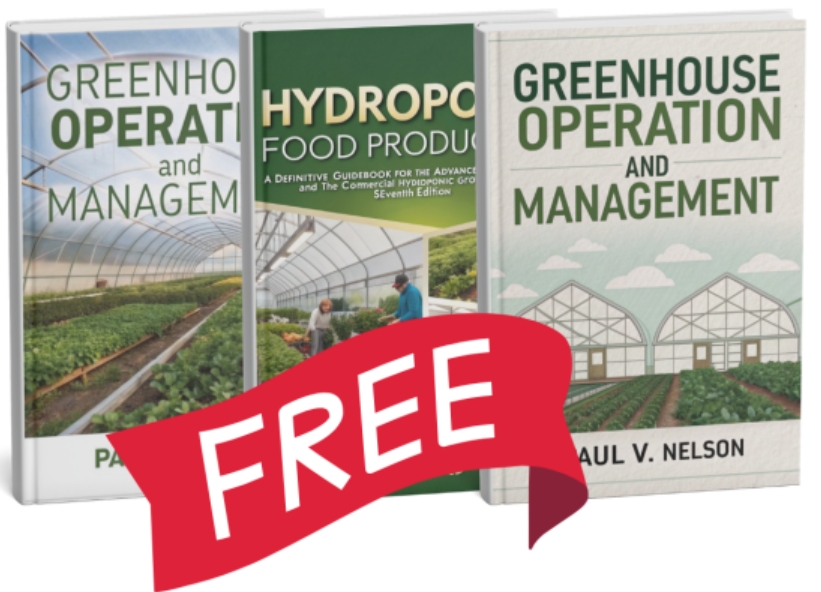Designing greenhouses in scorching heat requires completely different thinking than temperate climate structures. Many builders make costly mistakes by applying standard designs to extreme environments, resulting in crop failures and sky-high cooling costs.
Hot climate greenhouse design requires elevated structures with 6+ meter heights, maximum natural ventilation through strategic vent placement, optimal orientation for prevailing winds, and specialized cooling zones. Proper design can reduce internal temperatures by 15-20°C below poorly designed structures.
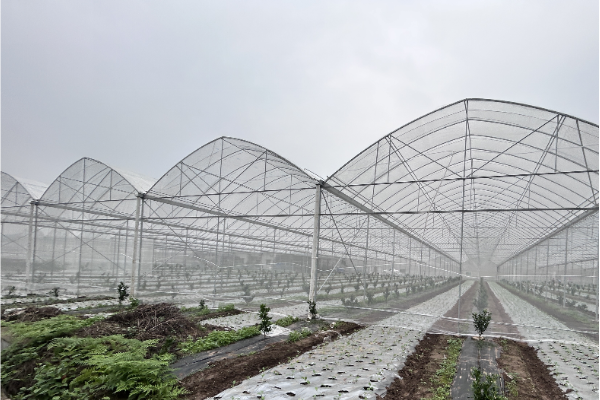
After designing greenhouse systems across Middle Eastern deserts, tropical Southeast Asia, and Australian outback regions for nearly three decades, I’ve learned that fighting extreme heat requires architectural strategies that work with natural forces rather than against them.
What are the Advantages of High Tunnel Arch Greenhouses in Hot Regions?
High tunnel arch greenhouses provide superior heat management in hot climates through enhanced natural ventilation, increased air volume for thermal buffering, and improved structural wind resistance. The arch design creates optimal airflow patterns that prevent heat accumulation.
High tunnel arch designs offer 25-30% better heat dissipation than traditional peaked roofs through continuous curved surfaces that promote smooth airflow, eliminate heat pockets, and provide 40% more internal air volume for thermal buffering at plant level.
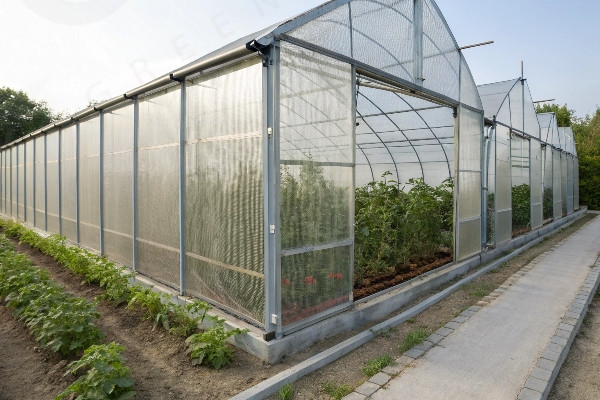
Airflow Dynamics in Arch Structures
The curved profile of arch greenhouses eliminates sharp corners and angles where hot air typically accumulates in traditional peaked designs. This smooth surface promotes laminar airflow that carries heat away efficiently without creating turbulence or dead air zones.
Stack effect ventilation works more effectively in arch structures because the curved roof creates a natural funnel that accelerates hot air movement toward ridge vents. The continuous curve from sidewall to peak maintains air velocity throughout the entire path, preventing heat stratification common in angular designs.
I observed this advantage dramatically during trials in Saudi Arabia where we tested identical crops in arch versus peaked greenhouses. The arch structure maintained temperatures 5-7°C cooler at plant level despite identical ventilation areas and external conditions. The difference came entirely from improved airflow patterns.
Wind loading characteristics favor arch designs in hot climates where severe storms are common. The curved surface deflects wind forces more effectively than flat surfaces, reducing structural stress and preventing damage that could compromise ventilation systems during critical cooling periods.
| Design Feature | Traditional Peak | High Arch | Temperature Benefit |
|---|---|---|---|
| Air Volume | Standard | 40% greater | 3-5°C cooler |
| Heat Pockets | Common | Eliminated | 2-3°C improvement |
| Wind Resistance | Moderate | Superior | Maintained ventilation |
| Ventilation Efficiency | 70-80% | 90-95% | 5-7°C difference |
Structural Height Optimization
Arch greenhouses naturally achieve greater height at the center while maintaining structural efficiency. This height increase provides crucial thermal buffering space above the crop canopy where hot air can accumulate without directly affecting plants.
The optimal arch height for hot climates ranges from 8-12 meters at the peak, compared to 6-8 meters for temperate regions. This additional height creates a thermal stratification zone where the hottest air remains well above plant level, maintaining comfortable growing conditions below.
Construction costs for arch structures often equal or exceed traditional designs initially, but the operational savings through reduced cooling costs provide rapid payback. Energy savings of 30-40% are typical when comparing arch greenhouses to peaked designs in extreme climates.
Foundation requirements for arch structures distribute loads more evenly than peaked designs, often reducing foundation costs despite the larger structure. The arch transfers loads primarily through compression, requiring less complex foundation systems than designs with significant bending moments.
Ventilation Integration Advantages
Ridge ventilation in arch greenhouses can extend continuously along the entire roof length without structural interruptions. This continuous venting provides uniform heat removal across the entire greenhouse floor area, preventing hot spots common with discrete vent openings.
Sidewall ventilation integrates seamlessly with the arch profile, creating smooth airflow transitions from inlet to outlet. The curved connection between sidewall and roof eliminates the sharp angles that create turbulence and reduce ventilation effectiveness in traditional designs.
Automated ventilation systems work more effectively in arch structures because the consistent airflow patterns make control algorithms more predictable. Temperature sensors provide more accurate readings when air mixing is uniform, leading to better automated responses to changing conditions.
Natural ventilation rates in arch greenhouses can exceed 40 air changes per hour during peak conditions, compared to 25-30 air changes in comparable peaked structures. This increased natural ventilation often eliminates the need for mechanical cooling systems entirely.
Does the Geographic Location of a Greenhouse Affect Cooling?
Geographic location profoundly affects greenhouse cooling requirements through elevation, proximity to water bodies, prevailing wind patterns, and local microclimate conditions. Strategic site selection can reduce cooling costs by 40-60% compared to poorly chosen locations.
Geographic location impacts cooling through altitude effects (6°C cooler per 1000m elevation), water body proximity (3-5°C reduction near large water masses), wind exposure (30-50% better natural ventilation), and microclimate factors that can vary by 10°C within short distances.

Elevation and Temperature Relationships
Altitude provides natural cooling through the atmospheric lapse rate of approximately 6°C per 1000 meters of elevation gain. This cooling effect is permanent and requires no energy input, making elevated sites highly valuable for hot climate agriculture.
High-altitude locations also experience greater day-night temperature swings that benefit many crops and reduce cooling loads during nighttime hours. Desert mountain locations can have 15-20°C temperature differences between day and night, compared to 5-8°C in low-elevation areas.
I designed a rose greenhouse facility in the mountains of Morocco at 1200 meters elevation. Despite summer daytime temperatures reaching 35°C in nearby valleys, our site rarely exceeded 28°C. The natural cooling eliminated the need for mechanical cooling systems entirely, saving $40,000 annually in energy costs.
Air density changes at altitude affect ventilation system performance. Thinner air at high elevations moves more easily through vents but provides less cooling capacity per unit volume. Fan sizing calculations must account for reduced air density to maintain adequate cooling performance.
Humidity levels typically decrease with elevation, improving evaporative cooling effectiveness. Desert mountain locations often combine the benefits of natural temperature reduction with optimal conditions for pad-and-fan cooling systems.
| Elevation (meters) | Temperature Reduction | Humidity Impact | Cooling Benefit |
|---|---|---|---|
| 0-300 | Minimal | High humidity | Limited |
| 300-800 | 2-5°C | Moderate | Significant |
| 800-1500 | 5-9°C | Low humidity | Excellent |
| 1500+ | 9°C+ | Very low | Maximum |
Water Body Proximity Effects
Large water bodies moderate local temperatures through thermal mass effects and evaporative cooling. Locations within 5-10 kilometers of oceans, large lakes, or rivers experience reduced temperature extremes and increased humidity that benefits both natural and mechanical cooling systems.
Coastal locations benefit from sea breezes that provide natural ventilation during the hottest parts of the day. These thermal winds result from temperature differences between land and water masses, creating reliable airflow patterns that can be incorporated into greenhouse ventilation design.
The humidity increase near water bodies improves plant health in hot climates by reducing transpiration stress. However, this same humidity reduces evaporative cooling effectiveness, requiring careful balance in cooling system design.
Fog formation near water bodies can provide additional cooling and humidity benefits during early morning hours. This natural phenomenon extends the comfortable growing period and reduces irrigation requirements for many crops.
Wind Pattern Considerations
Prevailing wind patterns determine natural ventilation potential and must be considered during site selection and greenhouse orientation. Sites with consistent wind exposure can achieve 50% better natural ventilation than sheltered locations.
Seasonal wind changes affect cooling system design requirements. Monsoon patterns, trade winds, and seasonal weather shifts create varying ventilation conditions that must be accommodated through flexible system design.
Wind breaks and natural shelter can be beneficial or detrimental depending on their relationship to greenhouse orientation and ventilation design. Strategic use of existing terrain features can channel cooling breezes while blocking hot winds from unfavorable directions.
Local wind acceleration effects occur in valleys, passes, and coastal areas where terrain features increase wind speeds. These locations provide enhanced natural ventilation but may require stronger structural design to handle increased wind loads.
How Does Greenhouse Orientation Affect Ventilation Efficiency?
Greenhouse orientation determines natural ventilation effectiveness by controlling wind exposure, solar heat gain, and airflow patterns. Optimal orientation can improve ventilation rates by 40-60% while reducing solar heat load by 20-30%.
Optimal greenhouse orientation aligns the ridge perpendicular to prevailing winds for maximum cross-ventilation, positions long sides to minimize direct solar exposure during peak heat hours, and creates pressure differentials that drive natural airflow even in calm conditions.
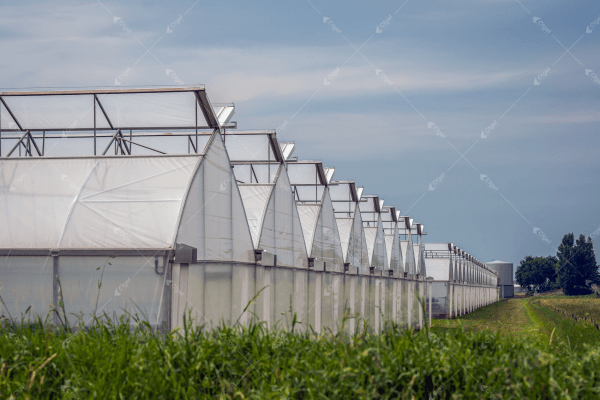
Wind Direction and Cross-Ventilation
Cross-ventilation effectiveness depends on greenhouse orientation relative to prevailing wind directions. Positioning the greenhouse perpendicular to dominant winds creates maximum pressure differential between windward and leeward sides, driving airflow through the structure.
The Venturi effect occurs when wind flows over and around greenhouse structures, creating low-pressure zones that enhance natural ventilation. Proper orientation maximizes this effect by presenting the optimal profile to prevailing winds.
Multiple wind direction considerations require compromise in orientation decisions. Most locations have seasonal variations in wind patterns that must be balanced to achieve year-round ventilation effectiveness. We typically optimize for the hottest season when cooling is most critical.
Wind shadow effects from nearby buildings, trees, or terrain features can eliminate natural ventilation benefits regardless of greenhouse orientation. Site surveys must identify and account for these obstacles during planning phases.
| Wind Angle | Ventilation Efficiency | Pressure Differential | Cooling Effectiveness |
|---|---|---|---|
| 0° (head-on) | 60-70% | Moderate | Good |
| 30° (angled) | 80-90% | High | Excellent |
| 60° (angled) | 70-80% | Moderate-High | Very Good |
| 90° (perpendicular) | 95-100% | Maximum | Optimal |
Solar Heat Gain Management
East-west orientation minimizes solar heat gain during the hottest midday hours by presenting the narrow end walls to the sun. This orientation reduces total solar heat load by 20-25% compared to north-south orientation in most hot climate locations.
North-south orientation maximizes winter solar gain for heating but increases summer cooling loads significantly. This orientation works better in climates with cold winters but creates excessive heat loads in consistently hot regions.
Seasonal sun angle variations affect optimal orientation decisions. Solar path analysis for specific locations helps determine the best compromise between summer cooling and winter heating requirements.
Building spacing and orientation interactions become important in multi-greenhouse installations. Proper spacing and orientation prevent one structure from blocking cooling winds for adjacent buildings while minimizing mutual shading effects.
Stack Effect Optimization
Stack effect ventilation relies on temperature-driven buoyancy to create airflow when wind is minimal. Greenhouse orientation affects this natural draft by determining how solar heating patterns create internal temperature gradients.
Thermal zones within the greenhouse develop based on orientation and internal heat sources. Equipment placement, crop layout, and walkway positioning must coordinate with orientation to optimize natural airflow patterns.
Ridge vent positioning relative to orientation determines stack effect effectiveness. Continuous ridge vents aligned with the greenhouse length provide optimal hot air removal regardless of wind conditions.
Inlet and outlet vent sizing must account for orientation effects on pressure differentials. Greenhouses oriented perpendicular to winds may require smaller inlet vents to maintain proper air velocities, while parallel orientations need larger inlets to achieve adequate airflow.
What Should Small Home Greenhouses in Hot Regions Pay Attention to?
Small home greenhouses in hot regions require careful attention to ventilation design, material selection, and cooling strategies adapted to limited budgets and space constraints. Poor design can create unusable growing conditions that waste investment and kill plants.
Small hot-climate greenhouses need maximum ventilation area (30-40% of floor space), reflective or insulated covering materials, automated vent controls, and supplemental cooling through evaporative systems or thermal mass. Proper design maintains usable conditions on budgets under $5,000.

Ventilation Design for Small Structures
Small greenhouses heat up much faster than large structures due to their high surface-area-to-volume ratio. Ventilation areas must be proportionally larger – typically 30-40% of floor area compared to 20-25% for commercial structures.
Automatic vent openers become essential in small greenhouses because manual operation cannot respond quickly enough to rapid temperature changes. These spring-loaded or wax-cylinder actuators cost $30-50 each but prevent crop losses worth hundreds of dollars.
Cross-ventilation requires careful planning in small structures where space constraints limit vent placement options. Even 6×8 foot greenhouses need inlet vents on one side and outlet vents on the opposite side to create effective airflow.
I helped a home gardener in Phoenix design ventilation for her 8×12 foot greenhouse. Initially, she planned only roof vents, but adding sidewall vents reduced internal temperatures by 12°C during summer afternoons. The $200 investment in additional vents saved her entire tomato crop.
Vent sizing calculations for small greenhouses must account for the rapid heat buildup in confined spaces. A 6×8 foot greenhouse needs approximately 15-20 square feet of vent area, compared to proportionally smaller requirements in large commercial structures.
| Greenhouse Size | Required Vent Area | Vent Types Needed | Approximate Cost |
|---|---|---|---|
| 6×8 feet | 15-20 sq ft | Roof + Side vents | $300-500 |
| 8×12 feet | 25-35 sq ft | Multiple roof + side | $500-800 |
| 10×16 feet | 40-50 sq ft | Continuous + auto | $800-1200 |
| 12×20 feet | 60-80 sq ft | Commercial-style | $1200-2000 |
Material Selection on Limited Budgets
Polycarbonate panels provide the best performance for hot climates but cost 3-4 times more than polyethylene film. For budget-conscious home gardeners, high-quality polyethylene with UV treatment and thermal properties offers acceptable performance at lower cost.
Double-layer polyethylene with air inflation provides significant insulation benefits that reduce cooling loads. The air gap creates thermal buffering similar to expensive polycarbonate panels at one-third the cost. Inflation blowers cost $100-150 but the energy savings justify the investment.
Shade cloth integration becomes critical for small greenhouses in hot climates. External shade cloth can reduce internal temperatures by 8-12°C and costs only $50-100 for small structures. Retractable systems add convenience but increase costs significantly.
Reflective materials like aluminum shade cloth or reflective polyethylene can reduce heat gain more effectively than standard materials. These specialized materials cost 20-30% more but provide superior cooling performance in extreme climates.
Cooling System Options
Evaporative cooling systems scale down effectively for small greenhouses. A simple swamp cooler designed for residential use can cool a 10×12 foot greenhouse adequately while costing only $200-400. These units require electrical connection and water supply but provide reliable cooling.
Thermal mass cooling uses water barrels or concrete blocks to moderate temperature swings in small greenhouses. This passive cooling method costs $100-200 to implement but provides 24-hour temperature buffering without ongoing energy costs.
Misting systems provide both cooling and humidity control for small greenhouses. High-pressure misting systems cost $300-500 installed but can reduce temperatures by 5-8°C while maintaining optimal humidity for plant growth.
Solar-powered ventilation fans offer cooling without increasing electrical costs. These systems cost $200-400 initially but operate free using solar energy. Battery backup options ensure continued operation during cloudy periods.
Automation and Control Systems
Temperature control becomes critical in small greenhouses where conditions change rapidly. Simple thermostatic controls cost $50-100 and can operate fans, vents, and cooling systems automatically based on temperature settings.
Humidity monitoring helps prevent condensation problems common in small, tightly sealed structures. Digital hygrometers cost $20-30 and help optimize ventilation timing to maintain healthy growing conditions.
Alarm systems protect valuable plants when equipment fails or extreme conditions occur. Simple temperature alarms cost $30-50 and can send alerts via smartphone apps when greenhouse temperatures exceed safe limits.
Smart greenhouse controllers integrate multiple functions including temperature, humidity, and ventilation control. These systems cost $200-500 but provide comprehensive automation that protects plants while optimizing growing conditions.
The key to successful small greenhouse operation in hot climates is understanding that downsizing doesn’t mean simplifying – it often requires more intensive management and proportionally higher investment in cooling systems. However, the rewards of year-round growing in extreme climates justify the additional effort and expense for dedicated home gardeners.
Conclusion
Hot climate greenhouse design requires elevated structures, strategic orientation, maximum ventilation, and location-specific adaptations. Success depends on working with natural cooling forces while providing backup systems for extreme conditions.
